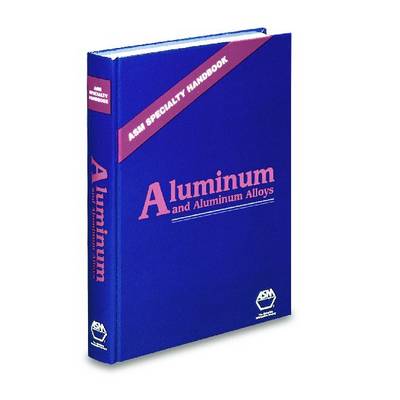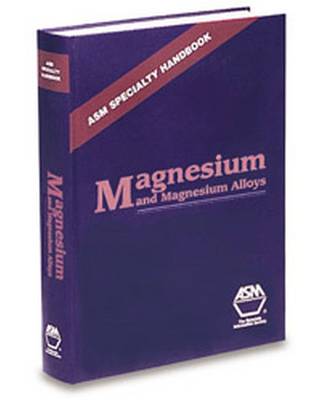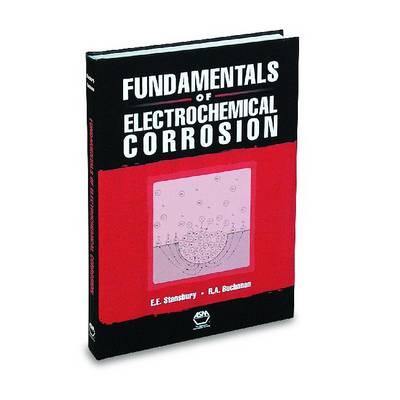ASM Handbooks
3 total works
Carbon and Alloy Steels
by Asm International Handbook Committee and J R Davis
Published 1 January 1996
Carbon and alloy steels are the workhorse of structural materials in modern engineering because of their very reasonable costs coupled with their many and varied properties that allow their use in such large array of applications. It's very easy to take steel for granted and forget how much it's relied upon in critical uses such as cars, bridges, buildings, landing gear assemblies, and more. It's what makes Carbon and Alloy Steels such an important Specialty Handbook series, it places special emphasis on the processing and service characteristics of steel. You'll find detailed, yet practical information that will help you select the best grade for a particular environment or application. There are in-depth reviews of formability, weldability, machinability, and hardenability of the various steel grades. You'll also discover how adding certain alloys can significantly improve steel processing. The strength and toughness section has been greatly expanded with more coverage than ever before of corrosion fatigue. You'll have access to extensive reports detailing which steels are more susceptable to environmental damage such as stress-corrosion and hydrogen embrittlement. Temperature effects relating to mechanical properties and corrosion are also discussed. As a special feature, entirely new articles on steels for specific applications like bearings, gears, automotive, oil and gas pipelines, and more are also discussed. Not only are material requirements covered, but applicable codes, standards and specifications as well. You'll learn what problems and failures others have experienced and what you can do to avoid similar difficulties.
ASM Specialty Handbook Magnesium and Magnesium Alloys
by Asm International Handbook Committee, M. M. Avedesian, and Hugh Baker
Published 1 January 1999
Prepared with the cooperation of the International Magnesium Association, this handbook is the most comprehensive collection of engineering information currently available on the properties, performance, and commercial uses of magnesium alloys.
Contents: General Characteristics; Physical Metallurgy; Melting, Refining, Alloying, Recycling and Powder Production; Casting; Heat Treatment; Forging, Rolling and Extrusion; Semisolid Processing; Forming; Joining; Cleaning and Finishing; Selection, Application, and Properties of Grades and Alloys; Design Considerations; Mechanical Behavior and Wear Resistance; Fatigue and Fracture-Mechanics; High-Temperature Strength and Creep; Corrosion and Stress-Corrosion Cracking; Specifications; Index.
Contents: General Characteristics; Physical Metallurgy; Melting, Refining, Alloying, Recycling and Powder Production; Casting; Heat Treatment; Forging, Rolling and Extrusion; Semisolid Processing; Forming; Joining; Cleaning and Finishing; Selection, Application, and Properties of Grades and Alloys; Design Considerations; Mechanical Behavior and Wear Resistance; Fatigue and Fracture-Mechanics; High-Temperature Strength and Creep; Corrosion and Stress-Corrosion Cracking; Specifications; Index.
This book is a comprehensive guide to the selection and applications of copper and copper alloys, which constitute one of the largest and most diverse families of engineering materials. The handbook includes all of the essential information contained in the 20-volume ASM Handbook series, as well as important reference information and data from a wide variety of ASM publications and industry sources. In addition to extensive property data for wrought, cast, and powder-metallurgy products, this book provides practical information on the casting, forming, joining, machining, and finishing of copper alloys. The principles of physical metallurgy, including the relationships among heat treatment, structure, and properties, are also examined. Specifications for copper and its alloys are cross referenced in useful tabular form. Recent alloy developments - such as low-lead free-machining alloys, high-strength alloys with resistance to corrosion in hot 'sour' environments, and thermally stable, high-conductivity electronic packaging materials-are also reviewed. Contents: Metallurgy, alloys, and applications Fabrication and finishing Metallurgy, microstructures, and phase diagrams: Metallography and microstructures of copper alloys and beryllium-copper alloys Solidification structures Phase diagrams. Engineering properties and service characteristics Appendices.


